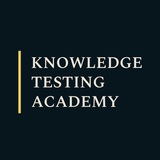MCQ No. 1769 | Biochemistry
The organ of the human body which has the highest requirement of glucose
The organ of the human body which has the highest requirement of glucose
Anonymous Quiz
14%
Kidney
29%
Skeletal muscles
21%
Cardiac muscles
36%
Brain
MCQ No. 1770 | Biochemistry
The intermediate citrate produced during the TCA cycle is used for the synthesis of
The intermediate citrate produced during the TCA cycle is used for the synthesis of
Anonymous Quiz
16%
Purines
32%
Fatty acids
21%
Pyrimidines
32%
Non-essential amino acids
MCQ No. 1771 | Pharmacology
Atropine is highly selective for:
Atropine is highly selective for:
Anonymous Quiz
23%
M1 Receptor subtype
24%
M2 Receptor subtype
11%
M3 Receptor subtype
42%
All of the above
MCQ No. 1772 | Pharmacology
Contraindications to the use of antimuscarinic drugs are all of the following EXCEPT:
Contraindications to the use of antimuscarinic drugs are all of the following EXCEPT:
Anonymous Quiz
15%
Glaucoma
17%
Myasthenia
28%
Bronchial asthma
40%
Paralytic ileus and atony of the urinary bladder
MCQ No. 1773 | Pharmacology
Which of the following agents is short-acting ganglion blocker?
Which of the following agents is short-acting ganglion blocker?
Anonymous Quiz
16%
Homatropine
28%
Trimethaphane
41%
Hexamethonium
15%
Pancuronium
MCQ No. 1774 | Pharmacology
Which depolarizing agent has the extremely brief duration of action?
Which depolarizing agent has the extremely brief duration of action?
Anonymous Quiz
23%
Mivacurium
36%
Rapacuronium
18%
Rocuronium
23%
Succinylcholine
MCQ No. 1775 | Medicinal Chemistry
The active metabollite of an antiepileptic drug Toxidone is
The active metabollite of an antiepileptic drug Toxidone is
Anonymous Quiz
13%
Dimethadione
45%
Hydroxy troxidone
26%
Paramethadione
15%
Primidone
MCQ No. 1776 | Medicinal Chemistry
Pentazocine is an analgesic, it belongs to the class of
Pentazocine is an analgesic, it belongs to the class of
Anonymous Quiz
26%
Benzomorphans
22%
Morphinans
37%
Phenyl piperidine
16%
Azepine
MCQ No. 1777 | Physical Chemistry
Which of the following method is used for the determination of osmotic pressure.
Which of the following method is used for the determination of osmotic pressure.
Anonymous Quiz
8%
Cottrell method
26%
Iandsbergers method
22%
Beckmans method
44%
Bekeley & Hartley method
MCQ No. 1778 | Medicinal Chemistry
Which of the following aqueous solutions would exhibit abnormal osmotic pressure
Which of the following aqueous solutions would exhibit abnormal osmotic pressure
Anonymous Quiz
32%
0.1 M NaCl
24%
0.1 M Glucose
28%
0.01 M Glucose
17%
0.1 M Urea
MCQ No. 1779 | Medicinal Chemistry
By adding non volatile solute to a solvent the boiling point of the solvent
By adding non volatile solute to a solvent the boiling point of the solvent
Anonymous Quiz
39%
Increase
19%
Will not change
25%
Many increase or decrease
16%
Will decrease
MCQ No. 1780 | Medicinal Chemistry
Sea water is converted in to fresh water based upon the phenomena of
Sea water is converted in to fresh water based upon the phenomena of
Anonymous Quiz
11%
Plasmolysis
17%
Sedimentation
67%
Reverse osmosis
5%
Diffusion
MCQ No. 1781 | Physical Chemistry
The temperature at which a compound melts in to a liquid of the same composition as the solid is called the
The temperature at which a compound melts in to a liquid of the same composition as the solid is called the
Anonymous Quiz
29%
Congruent melting point
25%
Incongruent melting point
28%
Peritectic temperature
18%
Metastable point
MCQ No. 1782 | Physical Chemistry
For a system of two miscible component the eutectic point exist at
For a system of two miscible component the eutectic point exist at
Anonymous Quiz
5%
Many temperature
43%
Definite temperature
41%
Absolute zero
11%
Zero
MCQ No. 1783 | Physical Pharmacy
Unit of kinematic viscosity is:
Unit of kinematic viscosity is:
Anonymous Quiz
18%
Dynes/cm sq
33%
Stoke
25%
Dynes.sec/cm
24%
Poise
MCQ No. 1784 | Physical Pharmacy
Liquid paraffin exhibits:
Liquid paraffin exhibits:
Anonymous Quiz
20%
Plastic flow
43%
Pseudoplastic flow
27%
Newtonian flow
10%
Dilatants flow
MCQ No. 1785 | Physical Pharmacy
Solutions of proteins and starch in water are example of:
Solutions of proteins and starch in water are example of:
Anonymous Quiz
28%
Lyophillic colloids
26%
Lyophobic colloids
35%
Hydrophilic colloids
12%
Hydrophobic colloids
MCQ No. 1786 | Physical Pharmacy
The movement of charged particle through a liquid under the influence of applied potential difference is known as:
The movement of charged particle through a liquid under the influence of applied potential difference is known as:
Anonymous Quiz
43%
Zeta potential
13%
Streaming potential
42%
Electrophoresis
3%
Electro-osmosis
MCQ No. 1787 | Pharmaceutical Analysis
Complexometric titrations are useful for the determination of......
Complexometric titrations are useful for the determination of......
Anonymous Quiz
44%
Metal ions
9%
Non metal ions
8%
Acidic drugs
38%
All of the above
MCQ No. 1788 | Pharmaceutical Analysis
EDTA is ................ligand.
EDTA is ................ligand.
Anonymous Quiz
21%
Tetradentate ligand
68%
Hexadentate ligand
9%
Octadentate ligand
2%
Pentadentate ligand
MCQ No. 1789 | Pharmaceutical Analysis
Which is not an organic precipitant?
Which is not an organic precipitant?
Anonymous Quiz
15%
Dimethylgloxime
20%
Oxalic acid
31%
Phosphatic acid
34%
Cupferron
